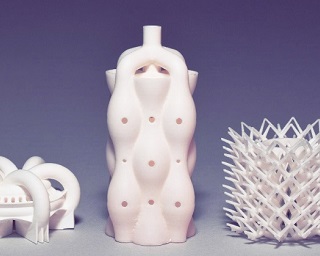
Potential new applications

The technologies shown here pave the way for a new generation of tool-free methods for small-batch, cost-efficient manufacturing of complex, multi-functional ceramic components made of different materials. Personalized, demand-based production (production on demand) for diverse industries and application areas is made possible by shorter development and manufacturing times.
Mechanical engineering
Ceramic components are used in mechanical engineering wherever other materials fail. Thanks to new possibilities in terms of design and functional integration and the cost-effectiveness of manufacturing small batches, products, such as optimized nozzles with integrated cooling channels, burners, seals, and thread guides, can be made.
Tool and mold making
Whereas casting molds and cores are already being used in the metal industry, the potential possessed by functionalized tools, such as grippers, is far from being exhausted.
Medical technology
Additive manufacturing is drawing significant attention in medical technology because of its potential for allowing patient-specific adaptation of endoprosthetic implants in the future. It can also enable cost-effective low-volume production of multi-functional, complex surgical instruments, such as grippers, forceps, and endoscopes.
Aerospace
Mirrors, housings, or actuators for high-performance applications in harsh environments – the aerospace industry is one of the largest drivers of innovation in additive technologies.
Jewelry and creative industry
Already today artists have completely new design options available to them through AM methods allowing elaborate casting molds and cores to be made for jewelry components. The possibility of directly manufacturing ceramic jewelry components, personalized watches, and glasses frames also appeals to designers.
Automotive industry
Especially in the premium segment, the aesthetically pleasing aspects of scratchproof ceramics present a unique highlight for controls and other interior components. New levels of design freedom and integration of functional elements are elevating this application area to the realm of discriminating tastes.
Chemicals and pharmaceuticals
Complex reactors and mixers with integrated functionalities are just two examples of the application possibilities in the chemical and pharmaceutical industries.
Consumer goods
Additive manufacturing has already been used with polymer materials to demonstrate the myriad of potential applications in sporting goods, cell phone cases, and numerous other everyday objects. Together with customers, Fraunhofer IKTS is conducting tests on AM ceramic products.
